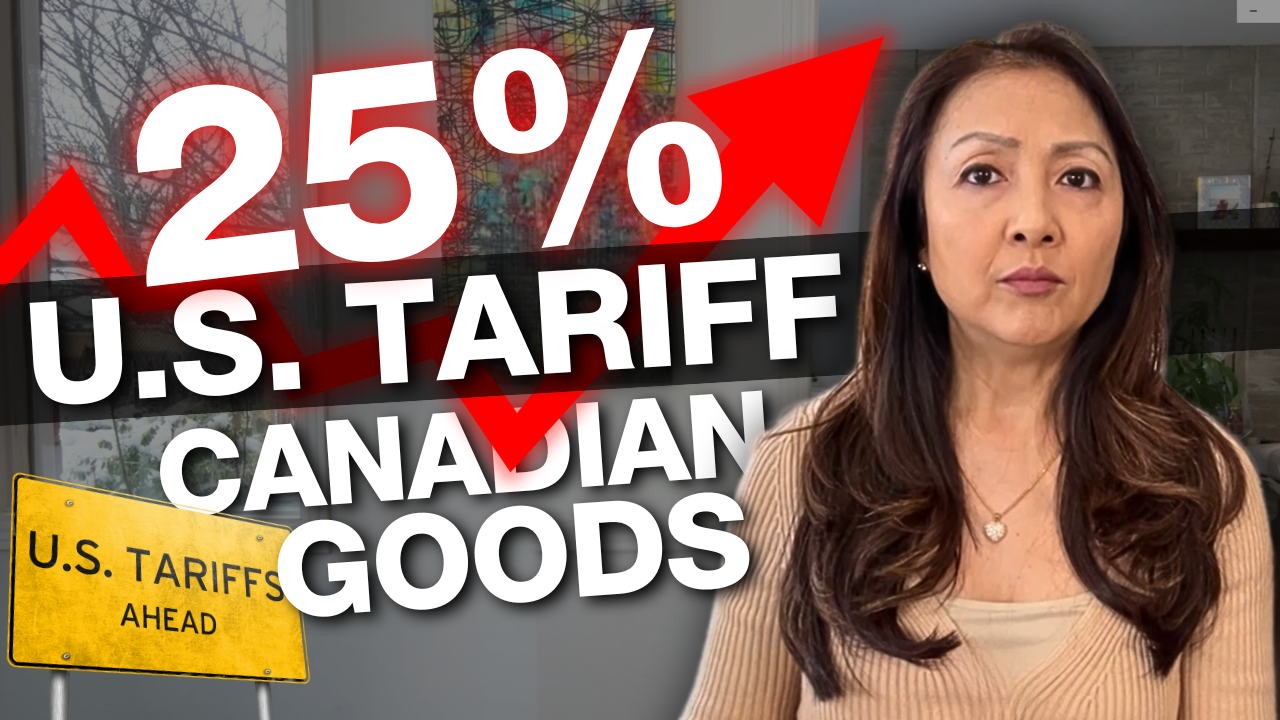US Tariffs: How It Affects You and the Toronto Real Estate Market

US Tariffs: How It Affects You and the Toronto Real Estate Market
The Impact of the U.S. 25% Tariff on Canadian Goods
The real estate market in the Greater Toronto Area (GTA) is no stranger to external influences. One of the latest developments that could shape the market is the announcement of a 25% tariff on Canadian imports by the United States. While this tariff has been temporarily put on hold, its potential impact on the real estate sector, including construction costs, mortgage rates, and overall market sentiment, is significant.
How the U.S. Tariff Affects the Economy
The 25% tariff was introduced by the U.S. government as part of broader policies addressing trade relations, border security, and economic protectionism. While it does not directly target the GTA real estate market, its ripple effects could be felt across multiple industries. The increased costs of imported goods, particularly construction materials, could drive up housing prices and slow down new developments. Additionally, economic uncertainty caused by the tariff could impact interest rates and consumer confidence.
Rising Construction Costs and Housing Prices
A major concern for homebuyers and investors is how the tariff could affect construction costs. Many housing developments in the GTA rely on imported materials, such as lumber, steel, and specialized fixtures. With a 25% tariff imposed on these imports, builders and contractors may face higher costs, which could be passed on to consumers.
Supply chain disruptions are already delaying construction projects, leading to fewer new homes entering the market. Given the existing imbalance between supply and demand, higher costs and reduced housing availability could contribute to an increase in home prices, particularly in new construction.
Interest Rates and Mortgage Market Uncertainty
The tariff’s impact on interest rates and mortgage rates is another critical factor to consider. The Bank of Canada has made multiple rate cuts over the past year, but economic pressures caused by tariffs could lead to different outcomes. Here are two possible scenarios:
Scenario 1: Further Rate Cuts
If tariffs slow down the Canadian economy and reduce exports, the Bank of Canada may opt for additional rate cuts to stimulate growth. Lower borrowing costs would make mortgages more affordable, potentially increasing demand for homes. This could benefit homebuyers looking for resale properties, as lower interest rates might counterbalance rising construction costs.
Scenario 2: Rate Holds or Increases
On the other hand, if tariffs lead to inflation and higher costs across various sectors, the Bank of Canada may need to hold rates steady or even increase them to curb inflation. In this case, higher mortgage rates would make homeownership more expensive, potentially cooling demand in the real estate market.
What This Means for Buyers and Sellers
For homebuyers, the potential for rising home prices means acting sooner rather than later could be beneficial, especially for those considering newly built homes. However, mortgage rate fluctuations should be closely monitored to determine the best time to secure a loan.
For sellers, market uncertainty means pricing strategies and marketing efforts must be carefully planned. With increased costs on the horizon, resale properties may become more attractive compared to new builds.
For investors, market shifts could create opportunities. Rising construction costs may lead to increased demand for resale properties, making them a solid investment choice. Keeping an eye on mortgage rates and broader economic trends will be crucial in making informed decisions.
While the U.S. tariff has been temporarily delayed, its potential impact on the GTA real estate market cannot be ignored. From rising construction costs to shifting mortgage rates, these changes could reshape market dynamics in 2025. Staying informed and working with experienced real estate professionals will be key to navigating this evolving landscape.
Are you considering buying, selling, or investing in real estate this year? Let’s discuss how these market changes could impact your next move. Reach out to Maria Homes today for expert guidance!